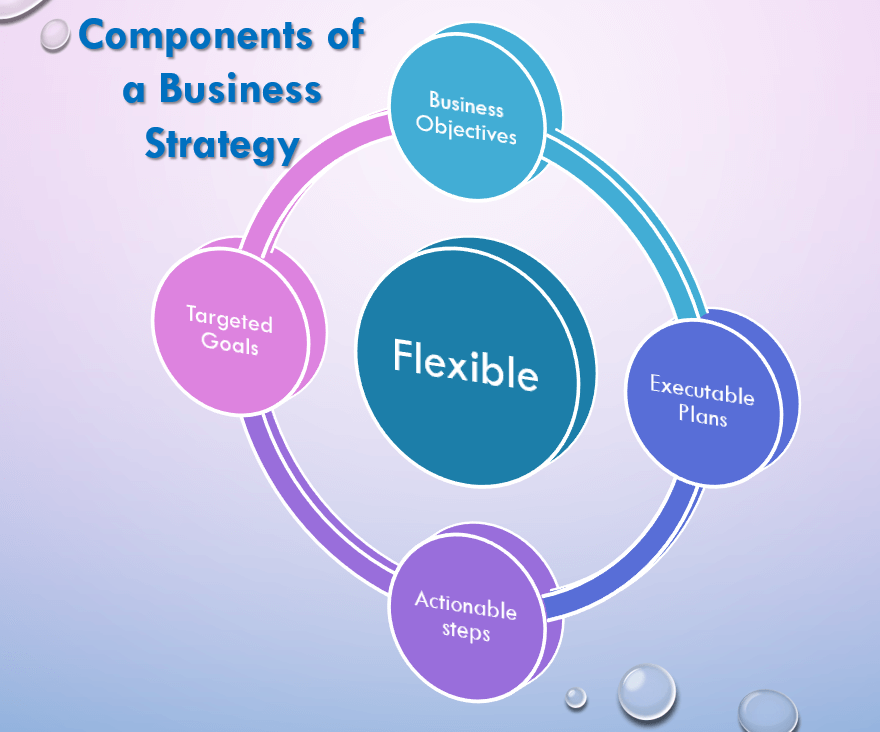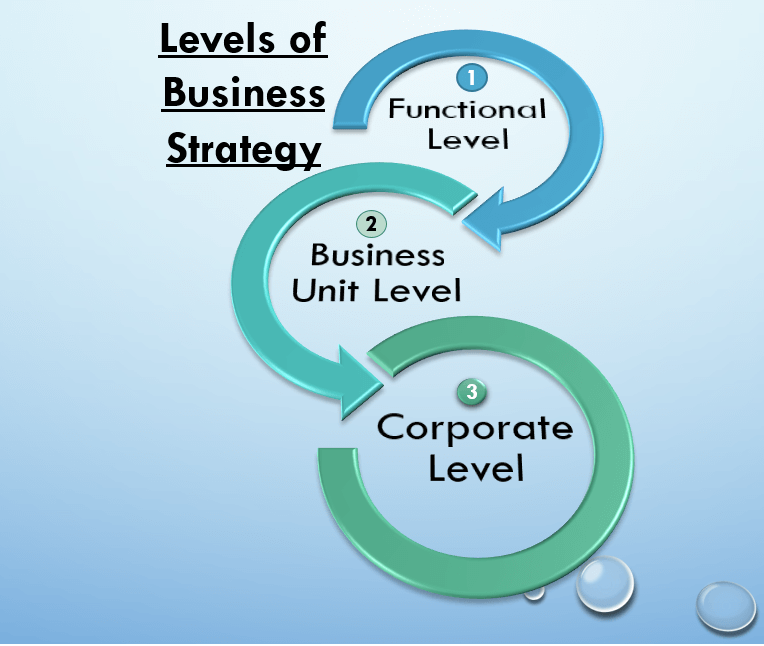When the question: what is business strategy is asked, a lot of definitions come to play. Many look at a blueprint, architecture, business map, business process, and plan. Whatever that comes to your mind, understand that business strategy is not a document kept on the shelf.
A business strategy is actionable steps that must be executed. Therefore, when you look at business strategies definition, think action, think implementation.
I’ve often said that most businesses in Nigeria are started by trial and error. This approach has mostly led to business failures. Moreover, every creator of a new business has a purpose behind it. This purpose is the primary objective of the business.
Between the kick-off and its present stage, your business goals are aligned towards achieving this primary objective. To ensure that your idea is marketable, you take a step forward by creating a business plan.
On your business plan, you set targets, identify insights by making relevant assumptions towards achieving your business objectives. Most business plans are dropped after the first 3 months, while some are dumped after their completion.
To ensure that you work in line with your business objectives, it is important that you adopt a business strategy.
What is Business Strategy?
When looking at what is business strategy, we look at business decisions, and actions to be taken to achieve them. The purpose of a business strategy is to achieve the laid-out business objectives.
Therefore, we can define business strategy as:
A laid-out process, plan, and actions by which business goals and objectives can be achieved.
This is the simplest definition that can help you understand how to approach your business strategy development. Business strategy has also been defined in the following ways:
the development, execution, and maintenance of critical business assets that help a business achieve its long-term goals.
Jake Kaldenbaugh
a clear set of plans, actions, and goals that outlines how a business will compete in a particular market, or markets, with a product or number of products or services.
IMD-TBL
a master plan that the management of a company implements to secure a competitive position in the market, carry on its operations, please customers and achieve the desired ends of the business.
Business Jargons
Therefore, business strategies are actionable decisions that must be taken in order to achieve business objectives. From the definitions, we can arrive at key components of a business strategy.
Components of a business strategy
The definitions of the term business strategy left us with some components that make up the term. Some of these components are plans, actions, goals, and objectives. A clearer understanding of these terms will help you to develop a sustainable strategy for your business.

- Plans: The first component of a business strategy is planning. It is where all necessary actions are aligned and key resources allocated. The planning process involves the integration of the company’s core values, philosophy, and culture to achieving results. It also evaluates the company’s competitive landscape using marketing analysis and SWOT to determine the positioning of the business. Note that the planning process takes care of the operational detail, sales & marketing, and organizational structure of the business. After the plans are laid out, the next component is the action.
- Action: After drafting the plan, you may decide to keep the plan. But real business strategy involves action. The action entails engagement and execution to achieve set targets based on measured goals. If you are engaging Business growth strategy to achieve targeted sales volume, then, take action. Actions may involve engaging in market penetration or market development. In the action component, look at the targeted goal and list the step-by-step process required to actualize the goal. Then follow suit by doing them.
- Goals: Goals are short-term objectives of a business, and they must be SMART. Goals are derived from the long-term vision, mission, or objectives of the company. They are monthly and yearly targets or timelines that add up to reach the long-term objectives.
- Objectives: The business objective is dependent on business strategy processes. It is the component that guides the entire process of business strategy development. A business without an objective will not know where it is going and probably will not have a strategy.
- Flexibility: A very important component of business strategy that is not often mentioned is flexibility. In today’s business world, change happens within a split of seconds. Therefore, business strategies bust welcome flexibility. This means that decisions taken should not be rigidly adhered to. On occasion when there is a need for review, it should be made immediately. In fact, business strategies need to be reviewed regularly to ensure compatibility with the real-world business environment.
These components when put together forms a business strategy cycle. The business strategy cycle shows that plans are constructed from a business objective. From plans, actions are formed to achieve goals, which accumulate to deliver the business objectives.
Benefits of a business strategy
Just like a business plan, a business strategy is quite beneficial to your business. Some of its benefits include:
- It will help you to identify steps and actions to undertake in order to reach your target.
- Good planning helps a business to achieve efficiency in human and resource management.
- It will also help you identify hidden areas of competitive advantage that will help you position your business.
- A good business strategy will be based on a company’s strengths and opportunities. This will help you eliminate every intending business threat.
- A good business strategy will enable you to have control of your business resources. This will enhance the organizational structure and effective flow of information.
- The flexibility of a business strategy will enable you to take advantage of favorable situations for growth. Also, when conditions are not favorable, you can easily devise a way of escape.
Levels of Business Strategy
There are three (3) basic levels of business strategy in every organization. Each level work towards achieving the overall company objectives. All three levels are a vertical integration from the lowest to the topmost level.

These three levels may not be operational in most small and micro businesses, but large organizations observe them. Small businesses may integrate all three levels into one or at most have 2 levels.
Functional level strategy
The lowest level at which a company can formulate a business strategy is the functional level. This is also the departmental level where business strategies are formulated to achieve departmental goals. Small businesses that have departments such as sales & marketing, production, and finance can activate this strategy.
Each department has individual goals which together contribute to the corporate goal. For example, the corporate goal may be to grow revenue by 20% in the first quarter. For the business to achieve this corporate goal, all departments will have a role to play.
The production will increase product units, the sales will increase sales, and finance will raise more funds. Each of these departments will set actionable steps to achieve departmental targets which contribute to the corporate goal.
Business level strategy
This is the second and middle-level business strategy. This is also the managerial level where business strategies are formulated to achieve business unit objectives. An organization may decide to create a business unit that will help in achieving corporate objectives.
For example, in line with the above corporate goal, a business unit that oversees product development can be created. This unit will have to formulate actionable strategies that will help it deliver the set targets.
To achieve this, the manager in charge of this business unit will oversee the strategies and ensure proper implementation.
Corporate level strategy
This is the topmost level business strategy and from where other levels derive their guide. This level handles the overall organizational objectives and set guidelines on how to achieve them.
The objectives set at this level is shared by all business units and functional departments. For example, the corporate objective indicated above will be shared by units and departments for speedy actualization.
Development of Business Strategies
We’ve answered the question, what is business strategy. But answering a question without implementing the content will lead you to nowhere. In this section, we shall look at how the development of a business strategy will help you sustain business growth.
How will you develop a sustainable business strategy?
Many small businesses have strategies that help them deliver their business objectives. How each business strategy is developed depends on the knowledge and skills of each business owner/ manager.
Trial and error
Some business managers develop their business strategies by trial and error. By trial and error, it means that there is no written plan or specified actions stipulated to meet a target. Some of these business managers do this because they lack basic business skills and knowledge.
Business managers in this category are people that grow to become business owners through apprenticeships. The wealth of experience they gained during their years of service has thought them what works.
By trying different strategies, they understand what works and why it works at a given time. They also know what does not work and why. They will then teach their apprentices the same, and it continues over time.
This method is great and has been successful within the Igbo (Nigeria) business community. However, one of its major setbacks is that it takes time to arrive at a winning business strategy.
Another setback is that it does not easily adjust to present business conditions. When business conditions change, the old strategies may not work, hence, another search will begin. And it takes time to arrive at a winning business strategy.
During the period of search, someone who is skillful will have a competitive advantage over them. This means that they may lose part of their market share to the competitors.
Skillful development of business strategy
Another way to develop a sustainable business strategy is by the acquisition of business skills and knowledge. There are business schools that teach business management courses to students. Business owners and managers who enroll in these schools acquire requisite management skills and knowledge. Such knowledge is gained through world-class professors, seasoned entrepreneurs, learning tools, and case studies.
Those who do not have the resources to enroll in a business school can acquire such knowledge here. Below, we shall briefly narrate how you can develop a sustainable business strategy.
How to develop a business strategy
The Idea
The starting point of developing a business strategy is to develop your business idea. What is the problem, what solution are you offering?
Understanding your business idea will help you to know where you want to be in the next few years. Starting from here, you can gather facts about the market, competition and perform a SWOT analysis.
The vision
Leaders are carriers of vision and they communicate the same to their subordinates for effective execution and sustainability. From your dream, you can formulate a vision and mission statement for the business.
This will help you to create long-term and short-term objectives which will help you specify goals and milestones.
Haven developed your business vision and mission, you will have to develop culture, values, and philosophy for your business. Your company culture and philosophy are key drivers to implementing a successful and sustainable business strategy. This is because they guide your daily actions and deliverables.
The plan
The third step is to develop a strategic plan that will reflect the business objectives based on the idea. The business plan will help you to break the vision and mission statement into long-term and short-term goals.
This is where you will put together a skillful, experience, and inspiring management team. Because you cannot drive the vision alone, your team will help you achieve the goals and milestones.
Also, planning will help you allocate and efficiently manage resources to drive your vision. Through planning, you will know what you have and what you need to get where you want to be. This is also where systems, processes and units, and departments will be developed to adequately manage the business.
Set goals
In this step, you will break down your business objectives into quantifiable goals. Goals help you create actionable steps.
Also, this will help you determine the levels of business strategy. At this point, each business unit and function will derive their goals and milestones from the central goal.
The SMART goals you set are quantifiable and measurable. Therefore, it makes the job of evaluation easy.
The action
The fifth step is to create actionable steps that must be taken in order to actualize the goals. Actions are step-by-step decisions and responsibilities that must be carried out for a leap in the goal line.
Start with the simplest step to the most complex step, and ensure that these steps are doable.
The evaluation
The last step is the evaluation of progress. The units and measures put in place when you created the SMART goals will help you to accomplish this step.
By evaluation, we mean looking back and accessing your progress. Find out if you are making progress or not and why.
This step is very important because it will help you identify positive and negative factors that are affecting your progress. If you are not making progress, it is time to review your goals and actions.
When you have evaluated your progress, determine the variance from the set target. The extent of variation will tell you whether to overhaul or improve on your actions.
Conclusion
In trying to understand what is business strategy we identified some components. These components are useful and also helps us in the development of a business strategy.
We learnt in a nutshell that what is business strategy is:
A business plan broken-down into actionable steps which are goals. These goals add up to the company’s objectives compatible with the present business environment and conditions.
This definition of business strategy gives you a concrete understanding and helps you develop one for your business. A business strategy must be flexible to fit-in in the ever-changing business environment.




